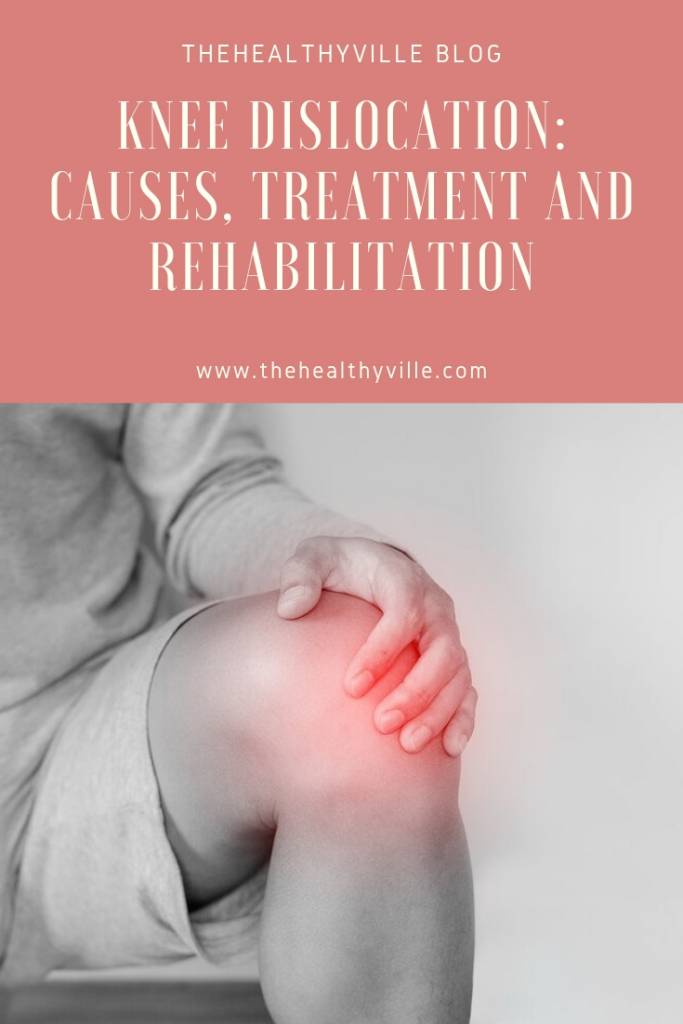Knee dislocation is a very painful injury produced by the displacement of the components of the joint. It is necessary to treat it correctly.
A dislocation is a lesion in which components within a joint move or separate. In the case of dislocation of the knee, the femur and the tibia are the bones that must return to their natural position.
As a general rule, the alteration only affects the bone pieces. However, the medical team must check if muscles, blood vessels or other nearby body areas have been damaged.
Another name that receives this disorder is dislocation. Also, dislocations are a frequent problem in our society and can occur in other joints.
What are the symptoms of a knee dislocation?
Generally, patients with this problem have a series of characteristic signs. Among the most common signs of dislocation are:
- Severe pain or discomfort in the joint if the patient tries to move it.
- Mild inflammation in the area where the dislocation has occurred. The patient may also show bruising in the damaged area.
- Tingling sensation, sensitivity and even numbness if there are alterations in the nerves.
- Deformation of the joint, which adopts an unnatural position.
What are the causes of a knee dislocation?
The most common cause of knee dislocation is trauma in the area, although there are other triggers.
Currently, possible causes that favor the presence of a dislocation in any body region have been identified. Among them we can find, for example:
- Trauma on the joint. It may vary slightly in location and intensity. The blow can occur both in a sporting field as in a work or domestic.
- Bad circulation. In this case, the patient has already developed this type of injury and is more prone to it (it is a repeat offense).
- Alterations of congenital nature. Therefore, the subject presents a series of alterations that increase the risk of developing dislocations since birth.
- Forced movement or bad support. The disorder is caused by an involuntary, abrupt movement, etc.
In some clinical cases, it is possible that the dislocation appears spontaneously due to the characteristics of the individual.
What are the types of knee dislocation?
If it is the first time that the subject has knee dislocation, it is a sudden injury that can become chronic. On the other hand, if you have already suffered the same disorder in the past, it is a recurring problem.
There are also patients who frequently develop dislocations throughout the body (in this case they are common). One cause of this problem are diseases that affect the tissue that forms the joints. For example, Marfan Syndrome.
Also, we can classify this type of dislocations depending on the movement of the tibia with respect to the femur. In this way, we can find anterior, posterior, internal and external knee dislocations.
What is the treatment and rehabilitation?
In the first place, the displaced parts must be placed in their place, which may require different techniques.
First, the medical team should check the type of dislocation that the patient presents. In all cases, the final solution for the disorder is to reposition the knee components to their original position.
After performing this procedure, you should immobilize the knee (extensive) with the help of a splint. Also, the immobilization time can vary between two and three weeks according to the severity of the disorder.
On the other hand, in the most serious cases, it may be necessary to carry out a surgical intervention. In this way, the displaced bones can be placed correctly. Doctors may need to repair other structures such as ligaments and meniscuses, if necessary.
Finally, the specialists will release the joint after the rest period. However, the subject must perform a series of rehabilitation exercises as part of the therapy. Thus, all possible mobility will be returned to the affected knee in a short period of time.
Further info: Relieve Knee Tendons And Ligaments Pain And Strengthen Them Naturally Using This!
Is there a possible prevention?
As a general rule, this kind of injuries occur during a sports practice. Therefore, patients can adopt a series of simple guidelines to avoid this disorder in the future.
Among them we can highlight the use of appropriate footwear for the terrain where the activity will take place. If possible, you should avoid a slippery floor as it increases the risk of falls. In any case, we recommend you to warm up before exercising to prepare your body for the effort.
Don’t forget to SHARE the causes and symptoms of knee dislocation with your friends and family on your social networks!

